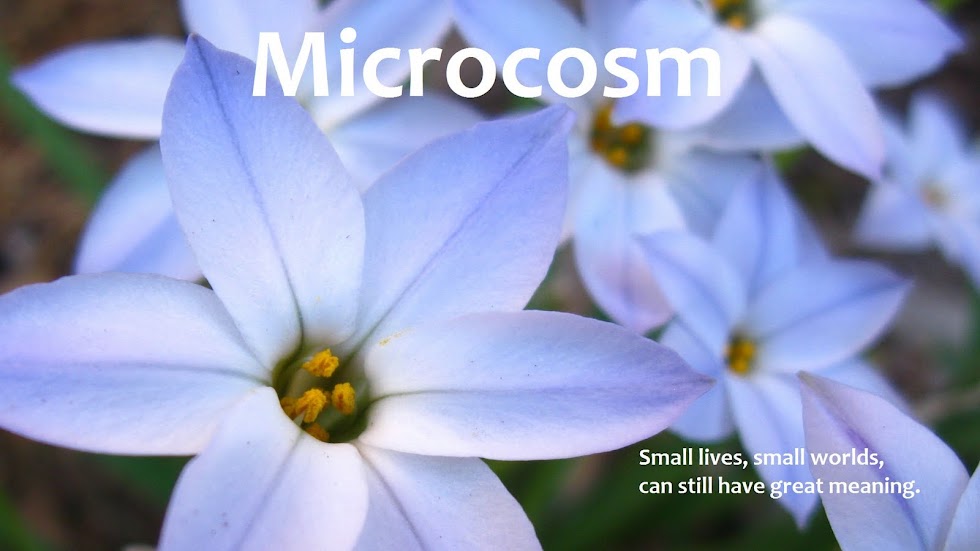or From Micro to Macro
Monsoon season in the American desert southwest is cause for rejoicing. After weeks of scorching sunshine, afternoon clouds and thundershowers temper the heat and glare. The dust settles; the mesas green up and the sunflowers come into bloom. To call it a rainy season strikes the outsider (and even the insider) as laughable—we measure rainfall in the hundredths of an inch; if a storm lasts for an hour we count ourselves lucky. The rains can still bring floods to our brick-hard lands, but they are localized—intense and damaging, perhaps, but soon over. To compare our storms with the deluges unleashed on the Indian subcontinent and its neighbors and call them both the monsoon almost makes a mockery of language. Technically, however, the weather patterns work the same way: the prevailing winds reverse direction and bring with them seasonal moisture. The difference is one of degree rather than of kind.
With the monsoons come more varied clouds than we often see here—not only the mighty cumulonimbus, the towering thunderheads that can be several miles tall, but also cirrus clouds with their delicate "fallstreaks," the high, wispy clouds that may look stationary but are most likely being buffeted by 150 mph winds; and the lovely cumulus, with its steely, flat-iron undersides and sunlit, billowy tops, each cloud boasting 350,000,000,000 water droplets per cubic foot. I marvel at them from the patio. I may love the sense of connection with a larger world that cloud-watching gives me, of reaching out with my imagination into the ether, but when I try to comprehend how these lovely white objects can be so mammoth, so high, so complex, my brain just gives up. I have no way of understanding those dimensions, of weighing the information on a human scale, yet I accept it as truth—just as I accept that the world is round without having traversed its circumference.
I love writing this blog, for the record. I value the creative outlet that it gives me and the way it encourages me to find the beauty and humor in the tiny occurrences and small lives with which I am surrounded. As I seem to be growing fond of saying, you can only hoe the row that's in front of you, and Microcosm is a way for me to hoe the row that is my life for all it's worth.
But sometimes I feel as if I'm fiddling while Rome burns.
Or, more pertinently, while a nation drowns. The very same internet that makes it possible for me to transmit images of my small life, my small pleasures, to the world, makes it possible for the hugeness of the world and its catastrophes to come to me. I make peace with a cat while 17 million people in Pakistan are affected by flooding, 6 million of them now homeless; I rhapsodize about a bowl of rocks while the Indus, swollen to 40 times its normal size, strips the topsoil away from an area the size of the entire state of New Mexico. Yes, cats and rocks are my row, and I feel no guilt about that. But sometimes you look up from the end you're working on and realize just how far that row extends.
The very hugeness of the catastrophe makes it impossible to grasp; how can those numbers be weighed in a scale that's accustomed to cats and rocks? The difference in life condition makes the problem seem larger. How can I, an American urbanite, understand what it means to a family of farmers in Pakistan to have lost their home, their cows, their goats? to face missing the winter planting season? to have the work of a generation swept away and have nothing left to rebuild with? In my head I can see the answer: the loss of food, income, security, hope; a future spent in poverty below subsistence. But I have no way of truly comprehending that loss, of experiencing that devastation vicariously, of knowing in my gut what it means. I have never lost everything, knowing that everyone around me, not for a few miles but for hundreds of miles, has lost everything, too, and that there are no roads left to follow toward a better life.
You know what? It doesn't matter that I can't "get" it.
If your head is the only thing that works, then use your head. Visceral comprehension isn't a prerequisite for acceptance. Facts: the earth is round; the clouds are high; a lot of droplets of water make a rainstorm; the people caught in the middle of this disaster need every bit of help they can get. An acquaintance recently wrote about the "cumulative effect of small lives well lived." Just as it's hard to comprehend the magnitude of a problem that seems to have exceeded a human scale of suffering, so it can be hard to believe in the adequacy of small kindnesses, small mercies, small gifts to ease the suffering of others. But it's time to accept that these are real, too, that they matter.
Because sometimes, the world is our row.
--------------------------------------
Interaction.org (an umbrella organization that lists many member charities)
Doctors Without Borders
U.S. Department of State Pakistan Relief Fund
Thank you to my friend N.B. for originally posting these links on her Facebook page. I hope readers will feel free to add others to the list.

















